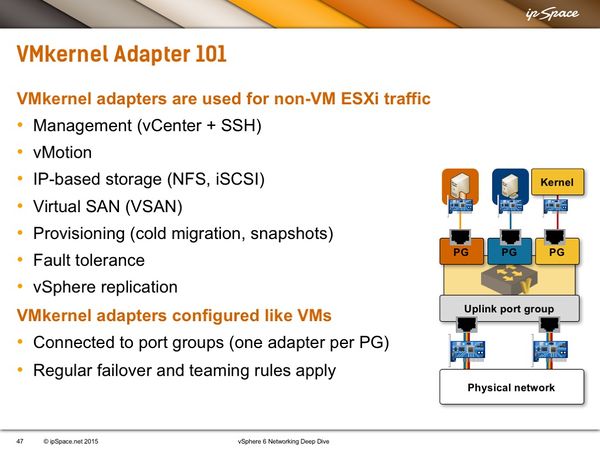Building Next-Generation Data Center
Using Multiple Subnets with VMware NSX
ipSpace.net » Documents » Building Redundant Layer-3-Only Data Center Fabrics » Using Multiple Subnets with VMware NSX
It is not possible to run VMware NSX in a design where uplinks belong to different subnets. The ToR switches to which an ESXi host is connected must be in the same subnet.
An ESXi host running VMware NSX for vSphere generates four distinct traffic streams:
- VM communication transported via VXLAN;
- Storage communication using NFS or iSCSI (we'll ignore the FC-based storage as it uses separate SAN network);
- vMotion and Fault Tolerance traffic;
- Management traffic with vCenter.
In a VMware NSX deployment using VXLAN-based overlay virtual networking all four traffic streams originate from ESXi VMkernel adapters.
ESXi VMkernel Adapters
All communication between ESXi kernel (or native processes running on top of ESXi kernel) and external world goes through VMkernel adapters. Each adapter uses a separate port group, and each port group could have a different failover behavior.
The diagrams in this section are taken from vSphere 6 Networking Deep Dive webinar. The webinar focuses on baseline vSphere 6 and does not cover add-on products. The text on the following slide thus does not include VXLAN VMkernel adapters used by NSX for vSphere.
The information in this article is incomplete. Expect new information in mid-May 2017.
Table of Contents
Coming soon:
- The Problem
- Applications using multiple IP addresses
- Routing on servers
- Fabric-based workarounds
Already online:
- VMware NSX

